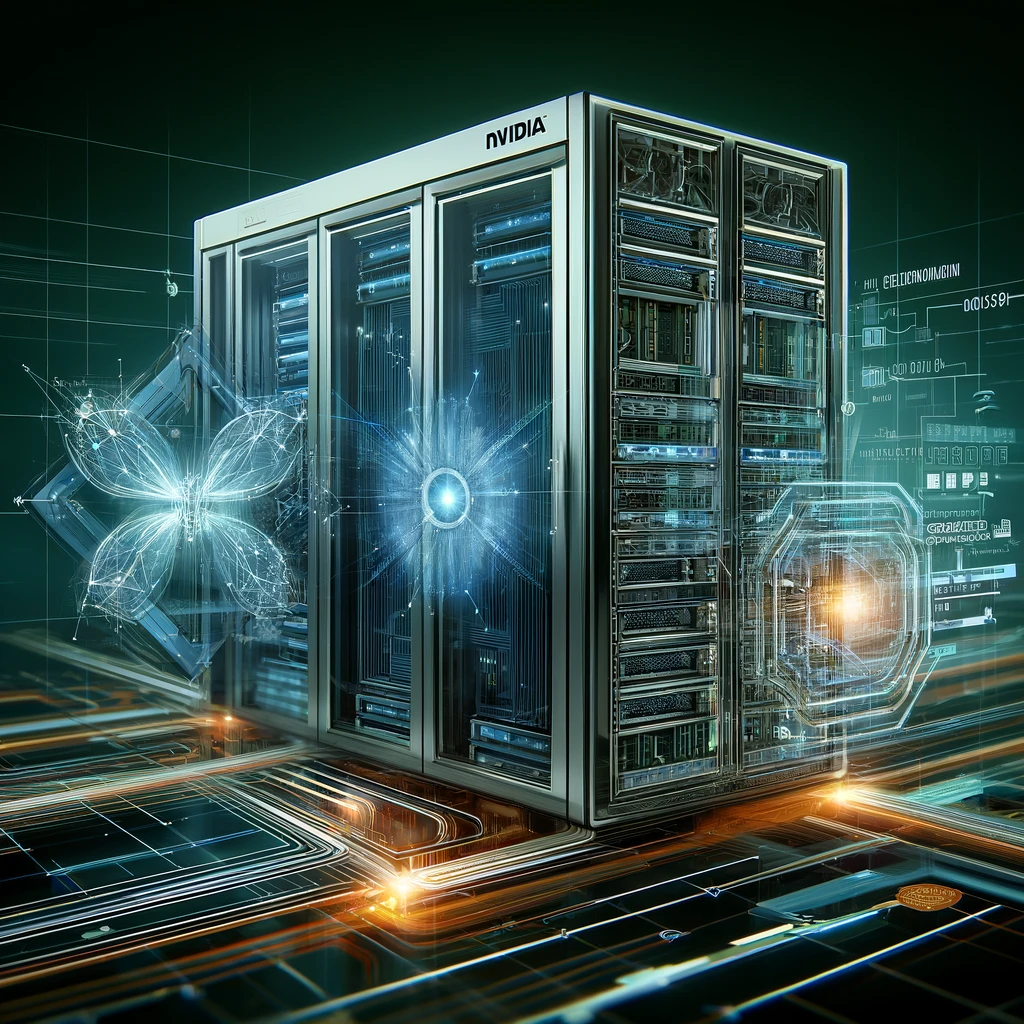Architecting the Future: Designing Novel AI Architectures for Trillion-Parameter Generative Models on the NVIDIA Blackwell Platform
The recent unveiling of NVIDIA’s Blackwell platform, featuring the NVLink Switch chip and the DGX SuperPOD supercomputer, has sent a shockwave through the generative AI community. This powerhouse duo promises to usher in a new era of AI, but unlocking its true potential hinges on our ability to design novel AI architectures specifically tailored for training and manipulating trillion-parameter models. In this blog post, we’ll delve into the exciting challenges and promising avenues of research in this critical area.
Part 1: The Trillion-Parameter Challenge
Trillion-parameter models represent a significant leap forward in generative AI. These behemoths hold the potential to revolutionize various fields, from drug discovery with ultra-realistic protein simulations to natural language processing with nuanced understanding and human-quality text generation. However, their immense size presents a formidable challenge. Traditional AI architectures, designed for models with a significantly lower parameter count, struggle with the computational complexity and memory requirements of trillion-parameter models. Training these models often takes weeks or even months on conventional hardware, hindering progress and limiting exploration.
Part 2: Unveiling Blackwell’s Powerhouse
The NVIDIA Blackwell platform offers a glimmer of hope. At its core lies the innovative NVLink Switch chip. This marvel of engineering facilitates parallel processing across a massive network of GPUs within a DGX SuperPOD system. Imagine hundreds of GPUs working in unison, dramatically accelerating computations and tackling the most demanding AI workloads. The Blackwell platform boasts unprecedented processing power, specifically designed to handle the large-scale, high-performance needs of training trillion-parameter models.
Part 3: Beyond Brute Force: Novel AI Architectures
While the Blackwell platform offers immense processing muscle, brute force alone won’t suffice. To truly unlock the potential of trillion-parameter models, we need a paradigm shift – the development of novel AI architectures specifically designed to exploit Blackwell’s capabilities. Here are some key research directions:
- Scalable Architectures: Traditional architectures struggle with the sheer size of trillion-parameter models. Research into hierarchical architectures that break down the model into smaller, manageable components for training is crucial. Model parallelism and parameter server architectures are also promising avenues, distributing the training process across multiple GPUs and dedicated servers for improved efficiency.
- Efficient Communication and Synchronization: With hundreds of GPUs working in concert within a DGX SuperPOD, facilitating seamless communication and synchronization becomes paramount. Research in gradient accumulation techniques that allow for efficient updates across GPUs and specialized communication protocols optimized for the Blackwell platform are essential areas of exploration.
- Adaptability and Training Efficiency: Training trillion-parameter models is a dynamic process. Novel architectures need to be adaptable, able to adjust resource allocation and training strategies based on the progress and evolving needs of the model. Advancements in dynamic data parallelism and efficient optimization algorithms can significantly improve training efficiency on the Blackwell platform.
Part 4: Collaboration is Key
Bridging the gap between cutting-edge hardware and efficient software algorithms requires close collaboration between hardware engineers and AI researchers. Hardware advancements like the Blackwell platform pave the way, but it’s the development of novel AI architectures that will truly unlock the potential of trillion-parameter models. Existing research initiatives like the OpenAI Collective [Link to OpenAI Collective Research] and the IEEE Conference on High Performance Computing [Link to IEEE Conference on High Performance Computing] showcase the collaborative spirit driving innovation in this field.
Part 5: The Generative AI Frontier
The convergence of powerful hardware like the NVIDIA Blackwell platform and groundbreaking AI architectures designed for trillion-parameter models opens a door to a future brimming with possibilities. Scientific discovery can be accelerated with ultra-realistic simulations, creative content generation can reach new heights with human-quality capabilities, and natural language processing can achieve unprecedented levels of understanding and fluency. As we embark on this exciting journey, collaboration, innovation, and a focus on responsible AI development will be paramount in shaping a future powered by these revolutionary models.







